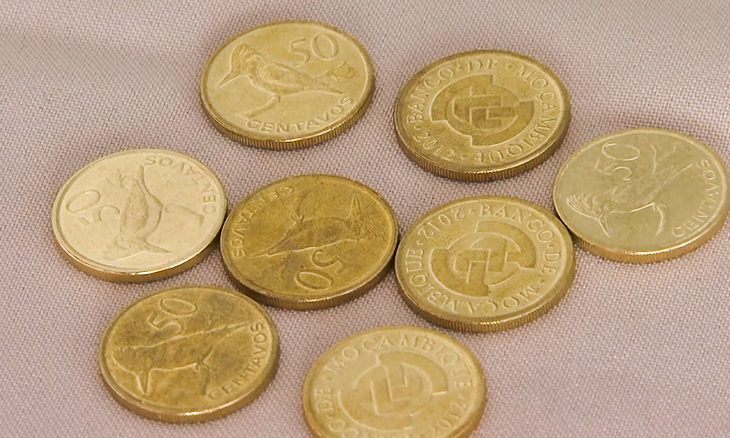Mozambique: Chapo prepares changes to the Single Salary Table
Mozambique: Fifty-cent coins rejected in markets and on public transport

Photo: O País
Some merchants in Maputo no longer accept 50 cent coins in payment, allegedly because they have lost value. One expert says this is due to the rise in the cost of living and currency devaluation.
The coin called 50 centavos [50 cents] comes from 2006, with the entry into force of the new Metical family.
Since its inception, there has been no shortage of things to buy with it. Candies, cookies could be bought and, combined with other coins, it could pay for water, soap and many other goods that cost more than 50 cents.
However, this is just a memory, because, these days, the 50-cent coin is being rejected by economic agents as well as the residents of Maputo.
Our reporting team did a test in one of the bakeries in the country’s capital. With six 50-cent coins and one 10 meticais coin we bought a loaf of bread for 10 meticais and a plastic bag for three meticais
As soon as the assistant saw the 50-cent coins, she said “Are these coins still around?” “Yes,” we replied and, in the course of the subsequent conversation, she revealed to us that she accepted the coins in question, but some people who reject them, including customers.
We even managed to buy bread using only 50-cent coins, but the day before, Monteiro Dias, one of our interviewees, was not so lucky.
“I wanted to buy bread at one of the bakeries, but because I had some 50-cent coins, I was rejected. After much argument, they gave me the bread, but they didn’t take the coins and said I owed them the three meticais,” he explained.
Monteiro Dias also said that some grocery stores in the Fajardo and Malanga markets, and even on public passenger transport, 50-cent coins are not accepted. And it is not only in the purchase of bread that these coins are rejected. In the purchase of vegetables, electronics, even in the “chapa”, discussions are heated, because nobody wants the 50-cent coins.
Verónica Macamo is a vegetable seller at Mercado Compone in Maputo. She says that she has suffered this rejection many times, to the extent that she no longer accepts 50-cent coins.
“They say that the coins are no longer useful. They tell us to go away. That’s why we don’t accept these coins either, because nobody will take them. Who will we give it to, if we can’t even buy bread with them?” she asks.
The same is true of several people with whom our report spoke.
So, what is behind this scenario?
We asked economist Egas Daniel to explain it to us.
“What happens is that things have changed since the last metical update. What could be bought in 2006, today you need to pay four times as much. Which means that the value that the 50 cents had in 2006 is not the same of today,” he explained.
In the years 2006 to 2010 and a little further on, there were still items priced at (for example) two meticais and fifty cents, such as chewing gum or a mint, but “nowadays physical transactions no longer allow you to establish prices with a margin of cents, like two and a half, three and a half, so the role that the 50-cent coin played is disappearing”.
This reduction, according to Egas Daniel, is due to the increase in the cost of living in recent years, which constitutes a major challenge for the Bank of Mozambique.
“The central bank faces two situations. As the metical lost value, it stopped issuing 50-cent coins, first because the public is not using it, second because the cost of production tends to be higher as time passes, compared to the real value”.
The 50 cent coin that we know comes from 2006, when the current metical family was introduced. But these days, this currency is rejected, both by economic agents and by the citizens of Maputo.
By Inalcídio Uamusse












Leave a Reply
Be the First to Comment!
You must be logged in to post a comment.
You must be logged in to post a comment.